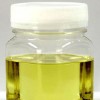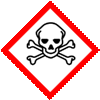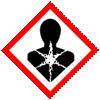Nitrobenzene Analytical Reagent Grade Manufacturers, with SDS GHS MSDS Sheet |
Supplier, Manufacturer, Exporter of Nitrobenzene Analytical Reagent Grade, Muby Chemicals of Mubychem Group, established in 1976, is the original manufacturers of Specialty Chemicals, Pharmaceutical Excipient, Fragrance Food & Flavor chemicals, Reagent Grade Chemicals, Shale Gas Fracturing Chemicals in India. Mubychem Group has several manufacturing facilities spread across Western India and world wide contacts and toll manufacturers. We are exporting globally to countries like USA, Canada, Europe, UAE, South Africa, Tanzania, Kenya, Egypt, Nigeria, Cameroon, Uganda, Turkey, Mexico, Brazil, Chile, Argentina, Dubai, Korea, Vietnam, Thailand, Malaysia, Indonesia, Australia, China, Germany, France, Italy Portugal, Bangladesh, etc. The products are offered as per required specifications and in correct shape and size in mm or meshs or microns as specified by the buyer. The participating units have one or more accreditations like FDA - cGMP and GLP approval, ISO-9001 Certified, "REACH" Registered, ISO-14001, ISO/IEC 17025, ISO-22000, FSSC 22000, ISO 45001, Kosher Certified, Halal Certified, HACCP, FSSAI. We offer Commercial Pure & IP BP EP Ph Eur USP NF JP FCC Food Grade Analytical Reagent Grades of Chemicals |
| Bookmark this Web Site -- or -- Email This Page Info to a Colleague or Yourself |
Search our website here:







Nitrobenzene CAS Number 98-95-3, EINECS EC Number: 202-716-0, Molecular Formula: C6H5NO2, Molecular Weight: 123.11, HS Code 29042000
How big is your requirement or how small
We serve it all.
Specifications, Safety Data Sheet, Manufacturing process details, Wholesale retail buy sell prices, Uses etc available on line in these pages for Nitrobenzene.
For SDS MSDS Sheet Click
SDS MSDS Sheet of Nitrobenzene Manufacturers
Nitrobenzene
Analytical Reagent Grade Suppliers

Nitrobenzene is an organic compound with the chemical formula C6H5NO2. It is a water-insoluble pale-yellow oil with a bitter almond-like odor. Nitrobenzene is used to produce lubricating oils such as those used in motors and machinery. A small amount of nitrobenzene is used in the manufacture of dyes, drugs, pesticides, and synthetic rubber.
General Properties and Specifications of Nitrobenzene:
Appearance: Yellowish, oily liquid.
Assay: 99%
Residue on evaporation: 0.005%
Acidity: 0.003%
Chloride: 0.0002%
Water by KF: 0.05%
Relative density: 1.2
Melting point: 5.7C.
Boiling point: 211C.
Flash point: 88C.
Auto-ignition temperature: 480C.
Solubility: Very slightly soluble in water.
Storage: Below 30C.
Nitrobenzene Analytical Reagent Grade:
C6H5NO2 Formula Weight 123.11
CAS Number 98-95-3
REQUIREMENTS
Assay: 99.0% C6H5NO2
MAXIMUM ALLOWABLE
Residue after evaporation: 0.005%
Water-soluble titrable acid: 0.0005 meq/g
Chloride (Cl): 5 ppm.
We also manufacture and supply as under:
1,3-Benzenedisulfonyl Chloride
P-Nitroaniline or 4-Nitroaniline
para-Nitrobenzaldehyde or 4-Nitrobenzaldehyde
Nitro Blue Tetrazolium Chloride or NBT
Manufacturers:
MUBY CHEMICALS
Ambernath Mumbai, Ankleshwar Gujarat, India
TEL: (OFFICE) +912223770100, +912223726950
Current Date Time in India GMT+5:30
e-mail: info@mubychem.com
USA, Canada, Mexico and other American neighbouring buyers may
e-mail: us@mubychem.com
Call toll-free 1-877-682-9243 (1-877-MUBYCHEM)

Copyright and Usual Disclaimer is Applicable.
Last 16 December, 2025




Exporters to USA Canada UAE Europe South Africa Tanzania Kenya Uganda Egypt Nigeria Turkey Mexico Brazil Argentina Chile Dubai etc.
Global or International Suppliers, Exporters, Importers, Manufacturers
I shall pass through this world, but once. If therefore, there is any good that I can do, or if there is any favor that I can show to a fellow human being, let me do it now. Let me not defer or neglect it. For I shall not tread this way again
Nitrobenzene SDS Safety Data Sheet
MSDS Sheet, Material Safety Data Sheet 18-Aug-23
1. Product Identification
Product Name & Other Names: Nitrobenzene.
CAS No.: 98-95-3
EINECS EC Code: 202-716-0
Molecular Weight: 123.11
Chemical Formula: C6H5NO2
Relevant uses and uses advised against (if any): Industrial Manufacturing.
Suppliers: As per letterhead.
2. Hazards Identification
GHS, Globally Harmonized System Classification in accordance with 29 CFR 1910
Classification according to Regulation (EC) No 1272/2008
Acute toxicity, Oral (Category 3), H301
Acute toxicity, Inhalation (Category 3), H331
Acute toxicity, Dermal (Category 3), H311
Carcinogenicity (Category 2), H351
Reproductive toxicity (Category 1B), H360F
Specific target organ toxicity - repeated exposure (Category 1) Blood, H372
Long-term (chronic) aquatic hazard (Category 3), H412
Labeling according to GHS USA & Regulation (EC) No 1272/2008
GHS Label Elements  Toxic | GHS Label Elements  Health Hazard |
Signal Word: Danger
Hazard Statements:
H301+H311+H331 Toxic if swallowed, in contact with skin or if inhaled
H351 Suspected of causing cancer.
H360F May damage fertility.
H372 Causes damage to organs (Blood) through prolonged or repeated exposure.
H412 Harmful to aquatic life with long lasting effects.
Precautionary Statements
P202: Do not handle until all safety precautions have been read and understood.
P220: Keep/Store away from clothing/other combustible materials.
P260: Do not breathe dust/fume/gas/mist/vapors/spray.
P264: Wash ... thoroughly after handling.
P270: Do not eat, drink or smoke when using this product.
P271: Use only outdoors or in a well-ventilated area.
P280: Wear protective gloves/protective clothing/eye protection/face protection.
P284 Wear respiratory protection.
P301+P310+330: IF SWALLOWED: Rinse mouth and immediately call a POISON CENTER or doctor/physician.
P302+P352: IF ON SKIN: Wash with soap and water.
P304+P340: IF INHALED: Remove victim to fresh air and keep at rest in a position comfortable for breathing.
P304+P341+P311: IF INHALED: If breathing is difficult, remove to fresh air and keep at rest in a position comfortable for breathing. Call a POISON CENTER or doctor/physician.
P305+P351+P338: IF IN EYES: Rinse cautiously with water for several minutes. Remove contact lenses, if present and easy to do. Continue rinsing.
P332+P313: If skin irritation occurs: Get medical advice/attention.
P337+P313: If eye irritation persists: Get medical advice/ attention.
P403+P233: Store in a well-ventilated place. Keep container tightly closed.
P405: Store locked up.
P501: Dispose of contents/container in accordance with local/regional/national/international regulations.
Classification according to EU Directives 67/548/EEC or 1999/45/EC:
Hazard Symbols:
T Toxic
N Dangerous for the environment.
Risk Phrase:
R23/24/25 Toxic by inhalation, in contact with skin and if swallowed
R45 May cause cancer.
R62 Possible risk of impaired fertility.
R48 Danger of serious damage to health by prolonged exposure.
R53 May cause long-term adverse effects in the aquatic environment.
3. Composition/Information on Ingredients
Product Name & Other Names: Nitrobenzene.
CAS No.: 98-95-3
EINECS EC Code: 202-716-0
4. First Aid Measures
Always seek medical attention after first aid measures are provided.
Inhalation: If is inhaled, it will cause irritation and damage to the nose and throat. It can cause headaches, bleeding from nose coughing and chest discomfort. Remove the victim to fresh air. If not breathing, give artificial respiration. If breathing is difficult, give oxygen. Get medical attention.
Ingestion: It will cause irritation and burns to mouth, digestive tract and stomach. It may lead to pain, nausea, vomiting, and even collapse. Contact the medical center quickly. Never give anything by mouth to an unconscious person. Get medical attention.
Skin Contact: On contact, it can cause itching, pain, swelling and redness. Immediately flush skin with plenty of water for at least 15 minutes. Remove contaminated clothing and shoes. Get medical attention. Wash clothing before reuse. Thoroughly clean shoes before reuse.
Eye Contact: It can cause severe damage to eyes. Check for and remove any contact lenses. Immediately flush your eyes with running water for at least 15 minutes, keeping eyelids open. Cold water may be used. Get medical attention.
5. Fire Fighting Measures
Fire: Flash point: 88C.
Toxic fumes, carbon dioxide, carbon monoxide and nitrogen oxides may be formed in fire.
Auto-ignition: 480C.
Fire Extinguishing Media: Dry chemical, foam or carbon dioxide and water spray jet.
Special Information: In the event of a fire, wear full protective clothing and NIOSH-approved self-contained breathing apparatus with full face piece operated in the pressure demand or other positive pressure mode.
6. Accidental Release Measures
Personal precautions, protective equipment, and emergency procedures: Avoid breathing dust/fumes/gas/mist/vapors/spray. Use individual protective equipment (waterproof boots, suitable protective clothing, safety glasses, etc.). Restrict unprotected personnel from the area. Prevent any contact with hot surfaces. Do not approach facing the wind. Do not touch the spilled material.
Environmental precautions: Do not let the product enter drains, soil, or water sources.
Methods and materials used for containment cleanup procedures and Storage:
Small Spill: Mop and pick up the material and place in an appropriate waste disposal container. Soak up with inert absorbent material and dispose of it as hazardous waste. Finish cleaning by spreading water on the contaminated surface and dispose of according to local and regional authority requirements.
Large Spill: Contain spilled material. Cover with an inert, non-combustible absorbent material, (e.g., sand, earth, diatomaceous earth, vermiculite). Avoid mist formation. Wear full protective equipment and ensure proper ventilation. Keep away from heat. Keep away from sources of ignition. Provide ventilation. Vacuum or sweep up and remove to an approved disposal container. Contact Environment Agency.
7. Handling and Storage
Precautions for safe handling: Keep away from heat and source of fire, preferably in a ventilated area. Apply according to good manufacturing and industrial hygiene practices. Ensure proper ventilation. Wash thoroughly after handling. Do not drink, eat, or smoke while handling. Avoid contact with skin, eyes, and clothing. Minimize dust generation. Avoid breathing dust/fumes/gas/mist/vapors/spray. Keep container tightly closed. Avoid ingestion and inhalation. Use individual protective equipment (waterproof boots, suitable protective clothing, safety glasses, etc.). Prevent any contact with hot surfaces.
Conditions for safe storage, including any incompatibilities: Store in cool, dry, and ventilated area away from heat sources and protected from sunlight in tightly closed original container. Keep air contact to a minimum. Keep locked up in tightly closed container. Do not leave the material container open. Store protected from heat, sparks and ignition sources and incompatible materials. Do not ingest. Avoid contact with skin and eyes. Avoid inhalation of dust/mist/vapor. Do not store with incompatible materials like oxidizing agents etc. Containers may be hazardous when empty since they retain product residues. Do not store near food items. Storage: Below 30C.
8. Exposure Controls/Personal Protection
Airborne Exposure Limits: This product does not contain any hazardous materials with occupational exposure limits established by the region-specific regulatory bodies.
Ventilation System: A system of local and/or general exhaust is recommended to keep employee exposures as low as possible. Local exhaust ventilation is preferred because it can control the emissions of the contaminant at its source, preventing dispersion of it into the general work area. Please refer to the ACGIH document, Industrial Ventilation, A Manual of Recommended Practices, most recent edition, for details.
Personal Respirators (NIOSH Approved): For conditions of use where exposure to the substance is apparent and engineering controls are not feasible, consult an industrial hygienist. For emergencies, or instances where the exposure levels are not known, use a full-face piece positive-pressure, air-supplied respirator. WARNING: Air purifying respirators do not protect workers in oxygen-deficient atmospheres.
Skin Protection: Wear impervious protective clothing, including boots, gloves, lab coat, apron or coveralls, as appropriate, to prevent skin contact.
Eye Protection: Use chemical safety goggles and/or a full-face shield where splashing is possible. Maintain eye wash fountain and quick-drench facilities in work area.
Other Control Measures: Maintain good housekeeping in work area. Handle in accordance with good industrial hygiene and safety practice. Wash hands after handling.
9. Physical and Chemical Properties
Appearance: Yellowish, oily liquid.
Odor: Bitter almond.
Odor threshold: Not available.
pH: Not available.
Relative density: 1.2
Melting point/freezing point: 5.7C.
Initial boiling point and boiling range: 211C.
Flash point: 88C.
Auto-ignition temperature: 480C.
Decomposition temperature: Not available.
Upper/lower flammability or explosive limits: Not available.
Vapor pressure: Not available.
Vapor density: Not available.
Evaporation rate: Not available.
Flammability (solid, gas): Not available.
Partition coefficient: n-octanol/water: Not available.
Solubility: Very slightly soluble in water.
Viscosity: Not available.
Molecular Weight: 123.11
Chemical Formula: C6H5NO2
10. Stability and Reactivity
Stability: Stable under ordinary conditions of use and storage.
Hazardous Decomposition Products: Carbon dioxide, carbon monoxide, nitrogen oxides (NOx) and toxic fumes may form when heated to decomposition.
Hazardous Polymerization: Not reported.
Incompatibilities: Oxidizing agents.
Conditions to Avoid: Heat, flames, ignition sources and incompatibles.
11. Toxicological Information
4-HOUR EXPOSURE.
Acute oral toxicity (LD50): 100 mg/kg estimate.
Acute dermal toxicity (LD50): 760 mg/kg [Rabbit].
Acute toxicity of the vapor (LC50): 2.81 mg/l - vapor 4 hour(s) [Rat].
Carcinogenicity: Presumed to have carcinogenic potential for humans.
Mutagenic Effects: Suspected of causing genetic defects.
Developmental Toxicity: Not available.
Reproductive Effects: May cause heritable genetic damage.
Causes damage to organs through prolonged or repeated exposure.
12. Ecological Information
Toxicity to fish: flow-through test LC50 - Danio rerio (zebra fish) - 92 mg/l - 96 h.
Toxicity to daphnia and other aquatic: static test EC50 - Daphnia magna (Water flea) - 35 mg/l - 48 h.
Persistence and Degradability: Persistence is unlikely based on information available.
Mobility: Will likely be mobile in the environment due to its volatility.
Bioaccumulation/ Accumulation: No information available.
Results of PBT and vPvB assessment: No data available for assessment.
13. Disposal Considerations
Whatever cannot be saved for recovery or recycling should be managed in an appropriate and approved waste disposal facility. Processing use or contamination of this product may change the waste management options. State and local disposal regulations may differ from federal disposal regulations. Dispose of containers and unused contents in accordance with federal, state, and local requirements.
14. Transport Information
DOT USA, TDG Canada & ADR/RID Europe
UN Number: 1662
Proper shipping name: Nitrobenzene
Class: 6.1, Packing group: II.
IMDG & IATA
UN Number: 1662
Proper shipping name: Nitrobenzene
Class: 6.1, Packing group: II.
15. Regulatory Information
USA:
SARA 311/312 Hazards: Acute Health Hazard, Chronic Health Hazard. See section 2.
Section 16 - Additional Information
European Labeling in Accordance with EC Directives:
H301+H311+H331 Toxic if swallowed, in contact with skin or if inhaled
H351 Suspected of causing cancer.
H360F May damage fertility.
H372 Causes damage to organs (Blood) through prolonged or repeated exposure.
H412 Harmful to aquatic life with long lasting effects.
Classification according to EU Directives 67/548/EEC or 1999/45/EC:
Hazard Symbols:
T Toxic
N Dangerous for the environment.
Risk Phrase:
R23/24/25 Toxic by inhalation, in contact with skin and if swallowed
R45 May cause cancer.
R62- Possible risk of impaired fertility.
R48 Danger of serious damage to health by prolonged exposure.
R53 May cause long-term adverse effects in the aquatic environment.
Disclaimer:
**************************
Our company provides this MSDS sheet in good faith but makes no representation as to its comprehensiveness or accuracy. This SDS sheet is intended only as a guide to the appropriate precautionary handling of the material by a properly trained person using this product. The above information has been compiled from various sources and has the possibility of discrepancy and being out-dated information. Individuals receiving the information must exercise their independent judgment and do further search in determining its appropriateness for a particular purpose. In no case shall our company be liable to loss or damages by the product user.
**************************
















